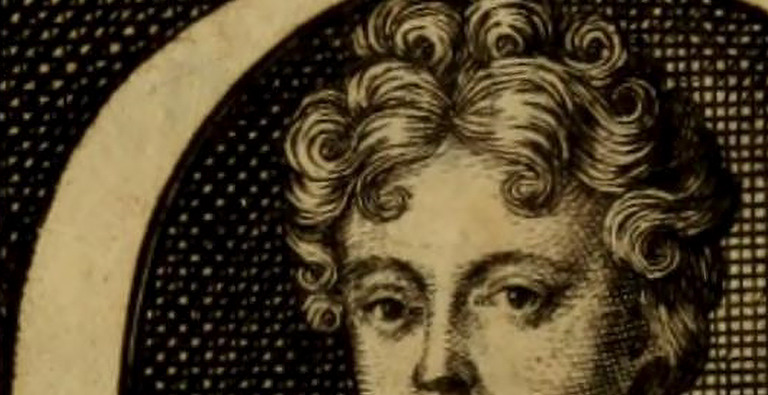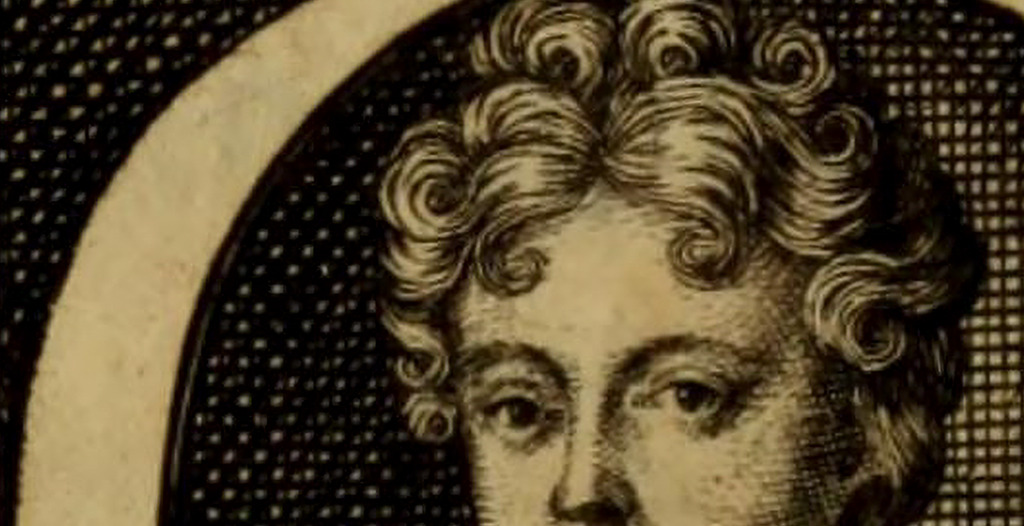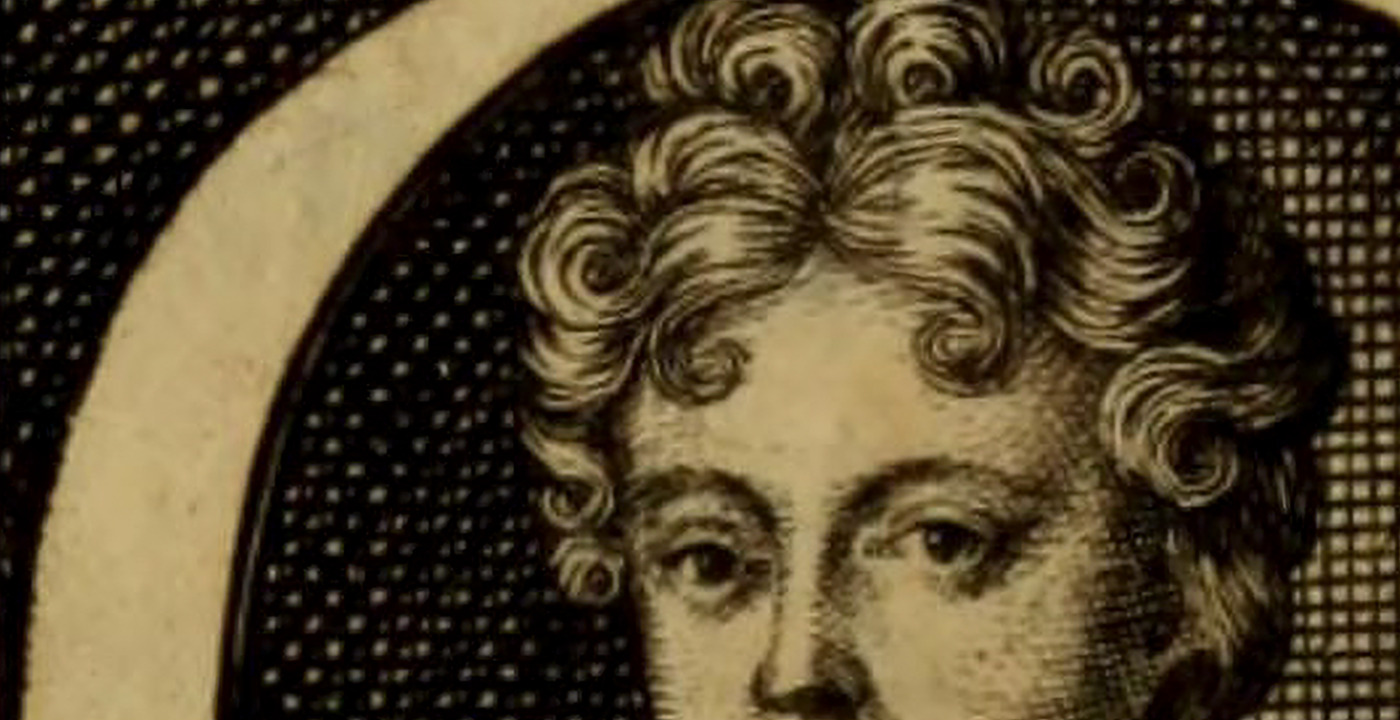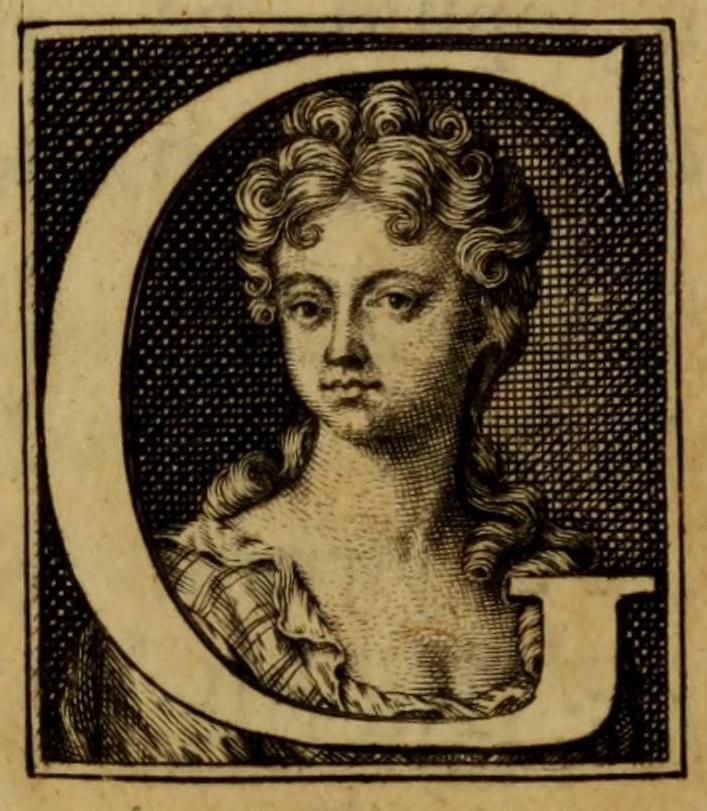Birth
September 29th, 1683 in Newcastle upon Tyne, UKEducation
Home taught.
Death
June 3rd, 1756Religion
AnglicanElizabeth Elstob was the first female scholar of old English and an early advocate for women's education, spending much of her life working as an educator and running her own school. In Anglo-Saxon linguistic studies, Elstob’s pioneering work was foundational, and at thirty-two, she published her magnum opus, The Rudiments of Grammar for the English-Saxon Tongue, First Given in English. During her lifetime, she struggled with poverty and a lack of institutional support, thwarting many of her aspirations. Despite this, in the wider context of female meritocracy, Elstob’s career illustrated what relative ‘outsider’ women could achieve.
Personal Information
Name(s)
Elizabeth Elstob
Date and place of death
June 3, 1756, at Bulstrode Park, Buckinghamshire. Buried: in churchyard of St Margaret’s Church, Westminster. There is no marker or memorial for her tomb.
Family
Elstob was the youngest daughter of a respectable and well-to-do Newcastle merchant, Ralph Elstob (d. 1688) and his wife Jane, née Hall (d. 1692). The deaths of first her father and then her mother left Elstob orphaned at the age of eight. Thereafter, she was raised by her paternal uncle and guardian, Charles Elstob, a Prebendary at Canterbury Cathedral.
Education
Elstob was home taught. After she moved to Canterbury, Charles Elstob attempted to restrict her education to subjects conventionally deemed ‘suitable’ for females; but she early showed a gift for languages, learning the rudiments of Latin and French.
From 1696, the teenage Elizabeth moved to reside, at first in Oxford and then, after 1702, in London, with her older brother William Elstob (1673-1715). By then established as a clergyman and freelance scholar, he encouraged his young sister’s linguistic interests, as she enhanced her familiarity with Latin and French, and learned six other languages. He also welcomed Elizabeth Elstob into a lively network of friends and scholars, known as the ‘Oxford Saxonists’, who were enthusiasts for the study of Anglo-Saxon culture. She flourished with their intellectual companionship, via meetings and correspondence. These contacts provided her with an unofficial and distinctly ad hoc College education, long before higher education for women slowly gained an institutional basis from the mid-nineteenth century onwards.
Religion
Little is known about Elstob’s innermost spiritual life but she was a devout member of the established (Anglican) Church of England, in which both her uncle and her admired older brother held clerical livings. Furthermore, Elstob argued that the Church of England was the true heir of the original Anglo-Saxon church, a pure and primitive institution which had not been warped by the later intrusions of institutionalised Roman Catholicism. That view was somewhat fanciful but expressed Elstob’s ardour for historic continuity and the essential ‘Englishness’ of Anglicanism.
Transformation(s)
Her brother’s death in 1715 left Elizabeth Elstob penniless and without a social role. She could not take Holy Orders and live the life of a scholar-clergyman, as this era was long before the slow and controversial admission of women to the clerical profession.
The Elstob family had no great capital assets, and Elizabeth Elstob struggled to pay off her brother’s debts, incurred in the course of funding their joint publications. She did not have a wealthy patron–a position which may anyway have been socially equivocal for a single young woman. Nor did Elstob either want or seek marriage with an affluent partner who would have been prepared to fund a scholar-wife.
Grittily, therefore, Elstob after 1715 embarked upon a lonely life as a school-mistress. This lowly semi-profession was one of the few avenues then open to learned ladies. Initially, she opened a school in Chelsea, west London. She attracted many pupils, keeping her very busy but raising insufficient money to pay off her brother’s creditors.
In 1718, she left London for rural seclusion. For some twenty years, Elstob made a modest living by running a Dame School in the small town of Evesham in Worcestershire (West Midlands), under the assumed name of Frances Smith. It is not known precisely why she chose this location, except that it removed her from financial pressures in the capital city. She is said to have had some discreet financial support from friends. Essentially, however, she had ‘dropped off’ the scholarly radar. The end result was that she was too impoverished, too busy, and too intellectually isolated to continue her studies.
In c.1738, Elizabeth Elstob at the age of fifty-five was invited to become governess to the children of the wealthy Margaret Bentinck, Duchess of Portland, herself a blue-stocking and an inveterate collector of antiquities and natural history. This post seems to have constituted a dignified form of semi-retirement for Elstob. She did not publish again; but remained an esteemed member of the household, living much among her books, until her death in 1756.
Throughout these vicissitudes of fortune, Elstob maintained a determined stoicism and perseverance. She also displayed a psychological self-containedness, which might (it may plausibly be speculated) be related to the traumatic experience, at an impressionable young age, of losing both parents, one after another, and suddenly having to leave her family and home for good.
Elstob later got help and companionship from her older brother William before his own death in 1715 (as earlier recounted). Yet there are no references to contact with other siblings, leaving Elstob an isolated figure. She herself recorded that, since her brother’s death in 1715 at the comparatively young age of 41, her own health remained poor, as she suffered from what she termed her ‘nervous fever’.
less
Significance
Works/Agency.
Elizabeth Elstob was not precluded by her gender from access to print culture. She accordingly launched into print, encouraged by support from her fellow scholars and by funding from her brother, William Elstob, who also published his own sermons and antiquarian treatises. At the age of twenty-five, Elizabeth Elstob published her translation from the French of Mme de Scudéry’s Essay upon Glory (1708) [see comment]; and followed that by her English translation from the Anglo-Saxon of An English-Saxon [sic] Homily on the Birthday of St Gregory (1709). Two hundred and sixty eight subscribers supported the publication of this latter publication, including titled aristocrats, antiquarians, clergymen, and 116 women.
Both these works were dedicated to Queen Anne, with prefaces praising the achievements of prominent women.
Undoubtedly, the peak of Elizabeth Elstob’s intellectual achievements occurred in 1715. At the age of thirty-two, she published her magnum opus, The Rudiments of Grammar for the English-Saxon [sic] Tongue, with An Apology for the Study of Northern Antiquities. It was the first work of this kind in English, and its pioneering presentation required the making of new printer’s fonts to reproduce precisely the historic script. In working at that task, Elstob gained expert assistance from the noted palaeographer and librarian, Humfrey Warley.
The Apology which constituted the preface to the Rudiments of Grammar presented Elstob’s sturdy advocacy of her subject (1715; facsimile reprint 1956). It is a rousing piece of writing, written with great assurance and polemical fire.
In the Preface, Elstob stressed the importance of understanding the historic roots of the English language. She rebuked the eminent cleric and satirist Jonathan Swift for his conventionally disparaging remarks about Anglo-Saxon as unduly monosyllabic, harsh and grating. She gave many poetic examples which revealed an effective use of monosyllables. And she stated, with a flourish: "I never cou’d find myself shocked with the Harshness of those Languages, which grates so much in the Ears of those that never heard them. I never perceiv’d in the Consonants any Hardness, but such as was necessary to afford Strength, like the Bones in a human Body, which yield it Firmness and Support. So that the worst that can be said on this occasion of our Forefathers is, that they spoke at they fought, like Men." See http://www.gutenberg.org/files/15329/15329-h/15329-h.htm 1956 repr. edn of 1715 tract, p. xi.
One key supporter of Elstob’s publication project was Mary Astell, the pioneer of feminist thought in Britain. Astell, who, like Elstob, was born in Newcastle upon Tyne and later moved to London, was the centre of a circle of feminist friends and scholars, including Elstob among their number. Astell, the older woman of the two, was a friendly mentor and she provided practical help by raising subscribers for Elstob’s work, using a known eighteenth-century system for getting pre-orders (and sometimes pre-payment) to reassure publishers.
In the years immediately before her brother’s death, Elizabeth Elstob also hatched an ambitious plan to edit a collection of Anglo-Saxon religious homilies by Aelfric. To that end, she advertised the project to raise funding support from interested patrons, as explained in her tract Some Testimonies of Learned Men, in Favour of the Intended Edition of the Saxon Homilies, Concerning the Learning of the Author of Those Homilies; and the Advantages to be Hoped for from an Edition of them (1713). Regrettably, however, the project was abandoned after her brother’s death. A partial set of page proofs (pp. 1-36 with some Mss notes) of the Homilies, left incomplete at Elstob’s own death, is now preserved in the British Library: Shelfmark General Reference Collection 37/695.l.8; UIN: BLL01000022402.
Contemporary Identifications
Reputation
Not only was Elstob’s Grammar a prodigious piece of scholarship in its own right, it was also an unprecedented contribution by a woman. Elstob won contemporary praise as the ‘Saxon nymph’–in a pastoral terminology which seems somewhat condescending to later generations–but which reflected some eighteenth-century male scholars’ attempts to assimilate the new phenomenon of female learning, outside the traditional monopoly of the University world.
However, not all men reacted with such forced jocularity. Elstob’s scholarship was uncontested and, while she herself dropped out of sight in the world of mainstream scholarship, her Rudiments laid a thorough, long-term foundation for the development of Anglo-Saxon studies in Britain.
Moreover, despite her isolation, Elstob in the 1730s and 1740s developed a friendly correspondence with the self-taught antiquarian and biographer, George Ballard [see comment]. They shared a common interest in Anglo-Saxon; and the younger Ballard became something of a protégé. He too was a cultural outsider; and he developed a great respect for female learning, whose antecedents he celebrated in a path-breaking study entitled Memoirs of Several Ladies of Great Britain Who have been Celebrated for their Writings or Skill in the Learned Languages, Arts and Sciences (1752).
Thus ultimately Elstob, while pessimistic about her own times, lived to see signs that women’s contributions to intellectual life might eventually come to be accepted and admired. While she wrote no feminist tract, she strongly endorsed the case for women to gain education and access to the world of learning.
‘If Women may be said to have Souls,’ she argued, ‘and if good Learning be one of the Soul’s greatest Improvements, we must retort the Question: Where is the Fault in Women seeking after Learning?’ Hence she expressed confidence that one day–however slowly–things would change. Scholarship would spread amongst both men and women, Elstob finally declared: "but I shall not live to see it."
Legacy and Influence
In Anglo-Savon linguistic studies, Elstob’s pioneering work was foundational. However, she has had little posthumous celebrity within the specialist world of linguistics–a feature which might seem overdue for remedy.
In the wider context of female meritocracy, Elstob’s career illustrated both what relative ‘outsider’ women could achieve–and equally demonstrated how female aspirations could be thwarted by penury and by a lack of institutional support systems.
At very least, it would seem appropriate that some memorial be established today – whether in St. Margaret’s Westminster, where Elstob was buried; or in the market town of Evesham where she worked incognito at the honourable task of educating the young. Alternatively, a fellowship or scholarship in her name would be an imaginative form of retrospective acknowledgement by an educational institution which teaches the language, history and culture of Anglo-Saxon Britain.
less
Bibliography
Primary (selected):
Elizabeth Elstob, The Rudiments of Grammar for the English-Saxon Tongue … With an Apology for the Study of Northern Antiquities … (London, 1715; facsimile repr. 1968).
George Ballard, Memoirs of Several Ladies of Great Britain, who have been Celebrated for their Writings, or Skill in the Learned Languages, Arts and Sciences (1752)
Project Gutenberg – Elizabeth Elstob, An Apology for the Study of Northern Antiquities (1715), ed. C. Peake for Augustan Reprint Society, 61 (Los Angeles, 1956).
Internet Archive – http://archive.org/search – five downloads relating to Elizabeth and William Elstob
UK National Archives – http://discovery.nationalarchives.gov.uk/details/c/F62946 – six entries relating to Elizabeth Elstob
Secondary (selected):
Clarke, ‘Elizabeth Elstob (1674–1752): England’s First Professional Woman Historian?’ Gender & History, 17 (2005), pp. 210–20.
S.H. Collins, ‘Elizabeth Elstob: A Biography’ (unpub. PhD. thesis, Indiana University, 1970).
S.H. Collins, ‘The Elstobs and the End of the Saxon Revival’, in M.M. Gatch, Anglo-Saxon Scholarship: The First Three Centuries, ed. C.T. Berkhout (Boston, Mass. 1982), pp. 107-18.
M.E. Green, ‘Elizabeth Elstob: The “Saxon Nymph” (1683-1756)’, in J.R. Brink (ed.), Female Scholars: A Tradition of Learned Women before 1800 (Montreal, 1980), pp. 137-60.
Hollis, ‘On the Margins of Scholarship: the Letters of Elizabeth Elstob to George Ballard, 1735–53’, Lias, 42/2 (2015), pp. 167–268.
Gretsch, ‘Elstob, Elizabeth (1683–1756)’, Oxford Dictionary of National Biography (online ed. 2007) doi:10.1093/ref:odnb/8761 [subscription required]
S.F.D Hughes, ‘Elizabeth Elstob (1683-1756) and the Limits of Women’s Agency in Early Eighteenth-Century England;, in J. Chance (ed.), Women Medievalists and the Academy (Madison, WI, 2005), pp. 3–24.
Murphy, ‘The Elstobs: Scholars of Old English and Anglican Apologists’, Durham University Journal, 58 (1966), pp. 131-8.
G.B.R. [G.B. Richardson?], William and Elizabeth Elstob, the Learned Saxonists, in Anon. (ed.), Repeats of Rare Tracts, Vol. 1 (Newcastle, 1847).
Seale, ‘The First Female Anglo-Saxonist’, History Today (Feb. 2016): publ. 4 Feb. 2016.
Sutherland. ‘Editing for a New Century: Elizabeth Elstob’s Anglo-Saxon Manifesto and Ælfric’s St Gregory Homily’, in D.G. Scragg and P.E. Szarmach (eds), The Editing of Old English: Papers from the 1990 Manchester Conference (Woodbridge, 1994), pp. 213–37.
Way, ‘“Our Mother-Tongue”: The Politics of Elizabeth Elstob’s Antiquarian Scholarship’, Huntington Library Quarterly, 78/3 (2015), pp. 417-40.
Web resources (selected): Wikipedia: https://en.wikipedia.org/wiki/Elizabeth_Elstob




Comment
Your message was sent successfully